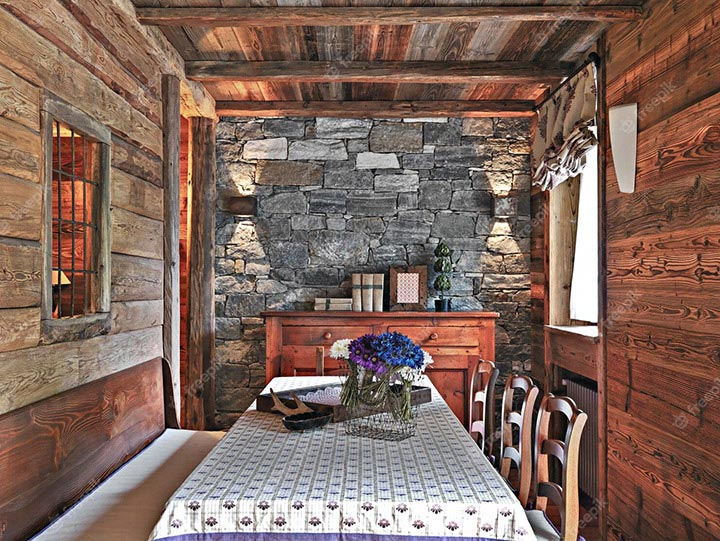Rustic interior design is all about bringing the natural beauty of the outdoors into your home. It’s a style that is warm, inviting and cozy, and it’s perfect for those who love a more laid-back and relaxed vibe in their living spaces.

At the heart of rustic interior design is the use of natural materials. Wood, stone, and metal are all commonly used to create a rustic aesthetic. You’ll often see exposed brick walls, wooden beams, and stone fireplaces in rustic interiors. These materials create a sense of warmth and coziness that is hard to replicate with modern materials.
Table of Contents:
- Introduction
- Definition of rustic interior design
- Key elements of rustic design
- Materials
- Use of natural materials
- Reclaimed wood
- Natural textures
- Elements
- Incorporation of natural elements
- Use of plants, flowers and branches
- Color Palette
- Earthy tones
- Use of pops of color
- Pros and Cons
- Advantages of rustic interior design
- Disadvantages of rustic interior design
- Conclusion
- Summary of key points
- Considerations before incorporating rustic design in your home.
One of the most recognizable features of rustic interior design is the use of rough-hewn wood. This can be seen in everything from the flooring to the furniture to the cabinetry. Reclaimed wood is particularly popular in rustic design, as it adds a sense of history and character to the space. If you’re looking to add some rustic charm to your home, consider incorporating reclaimed wood into your design.

Another key element of rustic interior design is the use of natural textures. This can be seen in the use of woolen rugs, linen upholstery, and burlap accents. These materials add a sense of warmth and coziness to the space, making it feel like a true retreat from the outside world.
Rustic design also often incorporates natural elements such as plants, flowers, and branches. These elements can be used in a variety of ways, from simple vases filled with flowers to more elaborate floral arrangements. This not only adds visual interest to the space, but it also helps to bring the outdoors in and create a more natural and organic feel.

When it comes to color palettes, rustic interiors often stick to earthy tones. Browns, greens and grays are common, as they help to create a sense of warmth and coziness. However, pops of color can also be incorporated through the use of textiles and accessories, such as a brightly colored throw blanket or a colorful vase of flowers.

Pros of rustic interior design include:
- Creates a warm and inviting atmosphere
- Incorporates natural materials for a sustainable aesthetic
- Can be personalized with reclaimed or vintage elements
- Brings a sense of history and character to the space
- Incorporating natural elements such as plants and flowers can improve air quality
Cons of rustic interior design include:
- Can be difficult to maintain, as natural materials may require more care
- May not be suitable for a modern or minimalist aesthetic
- Not always suitable for smaller spaces
- Can be costly to incorporate reclaimed or vintage elements
Overall, rustic interior design is a great choice for those who love the natural beauty of the outdoors and want to bring that aesthetic into their home. It’s warm, inviting and cozy, and it’s perfect for creating a true retreat from the outside world. However, it is important to consider the cons and if it suits your lifestyle before deciding to incorporate rustic design in your home.
Back to top of page
















No comments: